False Death Cap / Summer / Autumn / Edible
Scientific Name
Amanita Citrina
Common Names
False Death Cap, False Deathcap
Family
Amanitaceae
Habitat
They are mycorrhizal and form relationships with deciduous and coniferous trees, but I find them most often near beech.
Description
A member of the Amanita family that is often mistaken for the Death cap. Some sources suggest that the False Death Cap is edible but it’s probably not worth the risk.
Identifying Features:
Cap:
The caps are generally yellow to off white in colour and are covered in almost pure white fragments of the universal veil. Round or bulbous when young they flatten out as they mature.
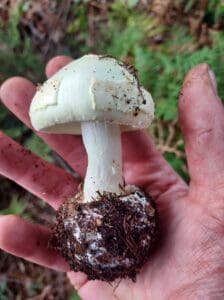
Stem:
A similar colour to the cap, growing from a large white volva, there is a ‘gutter’ or ridge at the top of the volva
They have a large ring or skirt which is near the top of the stem, the ring hangs down and tends to remain even when the mushroom is mature.
Gills:
White, crowded and free.
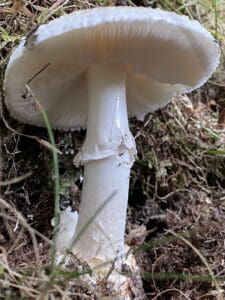
Smell:
They have a radish-like or raw potatoes smell.
Spores:
White.
Uses
In food
Older guide books might list them as edible when cooked but modern science has found that they contain the toxin alpha-amanitin (found in the Death cap) however, if eaten in normal amounts it is considered the concentration is so low that it is unlikely to have any significant effect on a healthy adult.
What do they consider to be a safe amount? I’m not sure.
I would recommend against eating them mostly because of the risk of mis-identification.
Known hazards
If you do decide to eat them they must be fully cooked before consumption.
Potential lookalikes
The Death Cap (Amanita Phalloides) looks very similar but the Death Cap has a sickly-sweet smell and very rarely has any veil remnants on the cap.
The Destroying Angel (Amanita Virosa) could look similar but again this has a sweet smell and a smooth cap.
Extra Notes
To make ID even harder there are two recognised variants of The False Death Cap, Amanita Citrina variant citrina and Amanita Citrina variant alba. Alba is almost pure white and slightly larger, var. citrina is lemon yellow with pure white veil remnants.



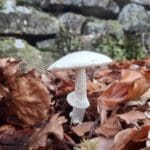
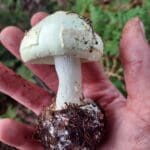
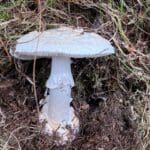
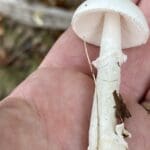
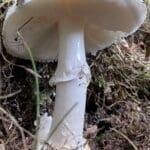
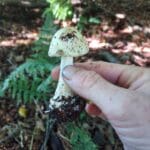



Leave a Reply
You must be logged in to post a comment.